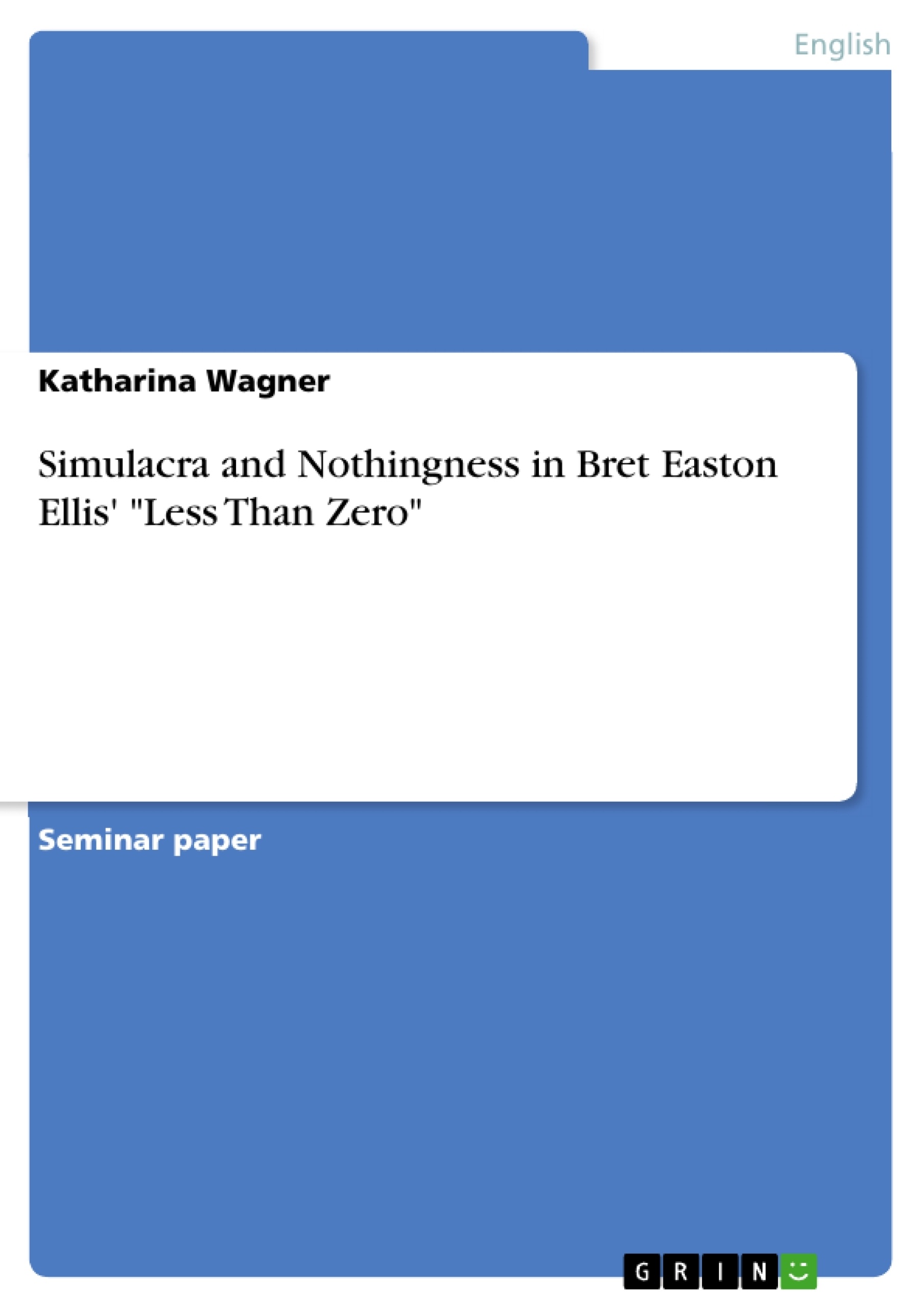With his debut novel Less Than Zero, Bret Easton Ellis set a milestone for a generation, who needed a voice. First published in 1985 when he was 21 and still at Bennington College, Ellis is now considered as the 'celebrity author' of the postmodern era, using the minimalist style for which the novel became famous. Writers of postmodern fiction, also called 'Blank Fiction', elegantly use a minimalist plot with flat characters in a simple style and as validated member of the 'Brat Pack', Ellis combines urban life, violence, drugs and consumerism.
In the novel we follow Clay, the 18-year-old protagonist and student at Camden College in New Hampshire, coming back to Los Angeles for Christmas break. Experiencing several parties, concerts, affairs and drugs with his old friends, Clay explores
the apathy, boredom and alienation from his old life. Although criticized for Ellis's straight nihilism, integrating his own celebrity persona into his art and creating a universe of immature characters who seem to grow older but without any growing effect, it is questionable, if Less Than Zero is only just that – a world inhabited by rich and shallow characters without any purpose.
With the help of Jean Baudrillard's simulation theory and Sartre's theory of Being and Nothingness, which will be introduced before analyzing the novel, this paper will address Clays world of simulacra and Nothingness and argue for this being the purpose of the novel; creating a meaningless world. Through conversations and media, a Clay becomes visible, who seeks for more beyond the surface and shallowness and although the novel does not seem to follow a red thread, it suggests that Ellis as an author of 'blank fiction' is well aware of what he is doing with Less Than Zero.
How can a novel be a how-to-torture, but also a book of serious ambition? (Baelo-Allué 2011)
This paper will show that an 'in-between' is possible; an 'in-between' between “pornographic gore” and “serious postmodern literature” - and maybe the two phrases do not contradict each other so much as assumed.
Table of Contents
- Introduction - “I don't have anything to lose.”
- Baudrillard: Simulacra and the Hyperreal
- Clay's 'realities' of empty images
- Sartre: Nothingness and non-being
- Nothing means everything
- Conclusion - “I wait for something to happen. Nothing does.\" ....
Objectives and Key Themes
This paper analyzes Bret Easton Ellis's novel "Less Than Zero" through the lens of Jean Baudrillard's simulation theory and Jean-Paul Sartre's theory of Being and Nothingness. The paper aims to demonstrate how these theoretical frameworks illuminate the novel's portrayal of a meaningless world inhabited by shallow characters.
- The concept of simulacra and hyperreality in contemporary society
- The influence of media and consumerism on individual identity and perception
- The themes of apathy, boredom, and alienation in a world dominated by superficiality
- The exploration of existentialist ideas in the novel's characters and narrative
- The role of minimalist writing and cinematic style in creating a sense of meaninglessness
Chapter Summaries
- Introduction - “I don't have anything to lose.”: This chapter introduces Bret Easton Ellis's "Less Than Zero" as a novel that captures the disillusionment of a generation. It establishes Clay, the protagonist, and his return to Los Angeles for Christmas break, where he encounters a world of apathy, boredom, and alienation.
- Baudrillard: Simulacra and the Hyperreal: This chapter introduces Jean Baudrillard's theories of simulation and hyperreality, arguing that contemporary society is characterized by a blurring of reality and its representation. It highlights how simulation creates a "hyperreal" that no longer refers to any underlying truth.
- Clay's 'realities' of empty images: This chapter applies Baudrillard's theories to "Less Than Zero," analyzing how Clay's world is constructed through a constant barrage of media images, leading to a sense of shallowness and meaninglessness. It explores how the novel's cinematic style further enhances this feeling of artificiality.
Keywords
The main keywords and focus topics of this paper include: "Less Than Zero," Bret Easton Ellis, Jean Baudrillard, simulation, hyperreality, simulacra, postmodern fiction, minimalist style, apathy, boredom, alienation, consumerism, media, existentialism, Jean-Paul Sartre, Being and Nothingness, Nothingness.
- Quote paper
- Katharina Wagner (Author), 2015, Simulacra and Nothingness in Bret Easton Ellis' "Less Than Zero", Munich, GRIN Verlag, https://www.grin.com/document/516751




